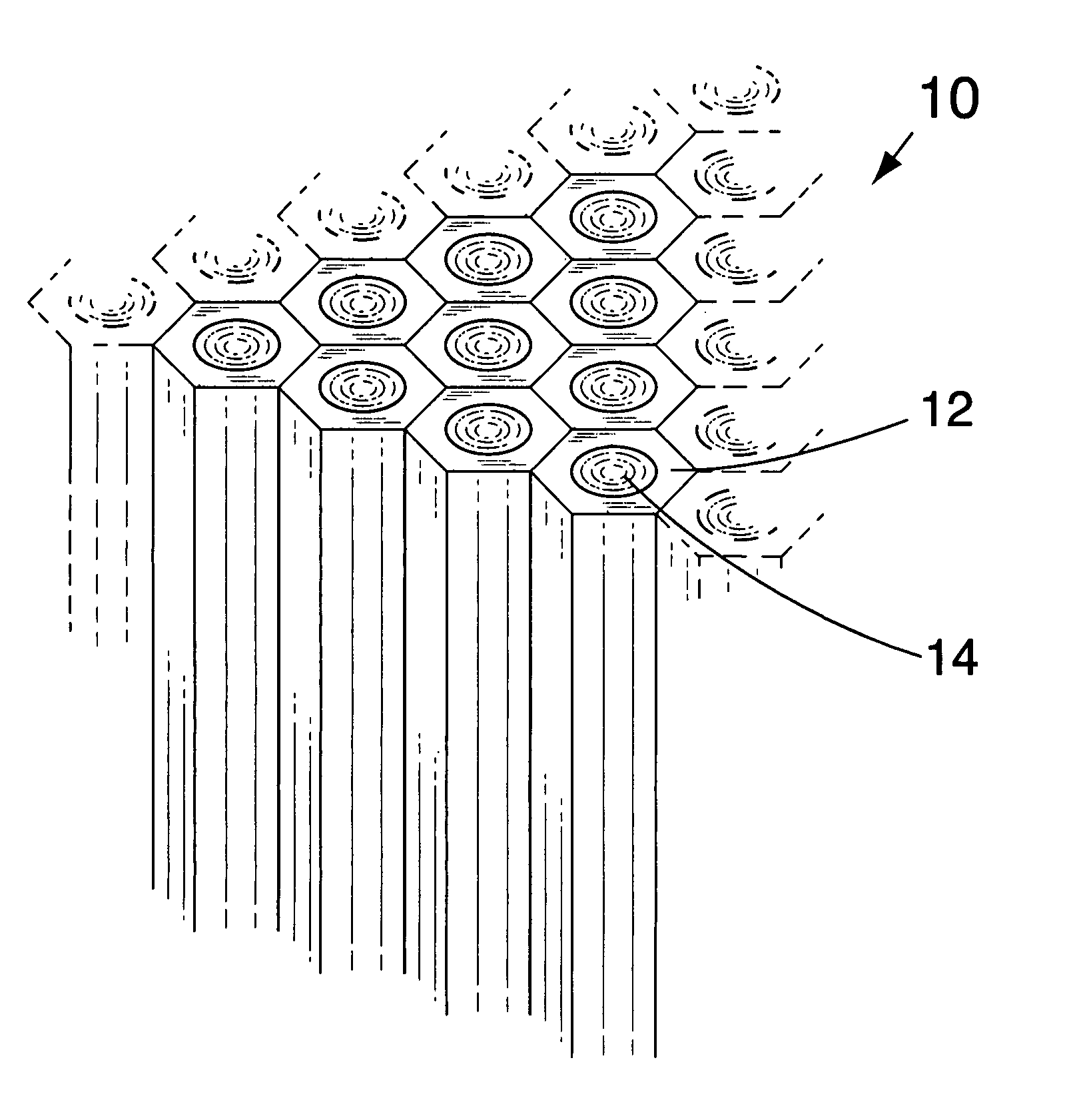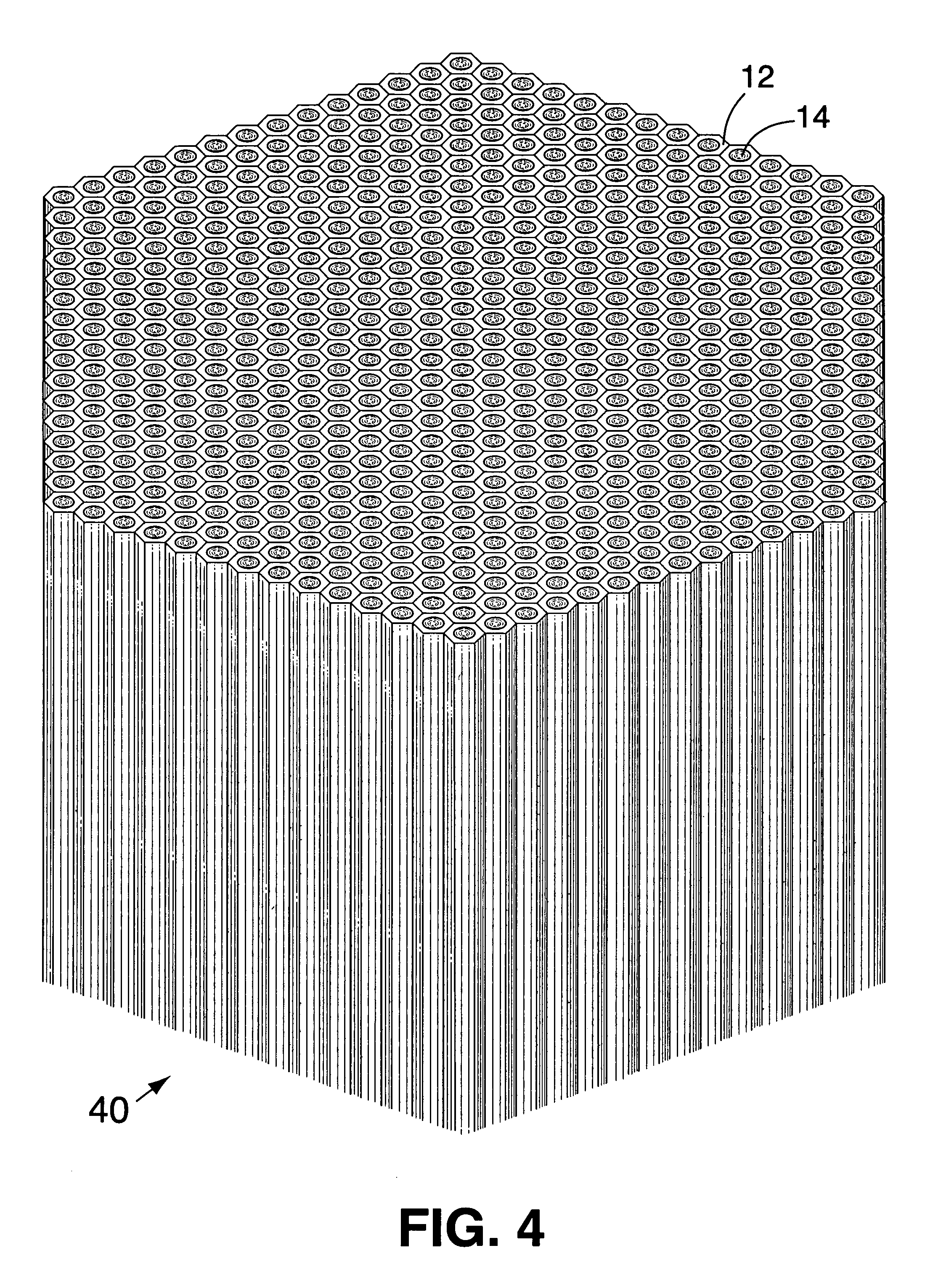Composite, ordered material having sharp surface features
- Summary
- Abstract
- Description
- Claims
- Application Information
AI Technical Summary
Benefits of technology
Problems solved by technology
Method used
Image
Examples
example i
[0052] In accordance with the present invention, glass rods having a Sylvania SG12™(equivalent to Corning 0120™) core glass as the less etchable protrusive phase and Corning 8161™ cladding (matrix glass) as the more etchable recessive phase were bundled, heated to a temperature sufficient to soften the rods, and drawn to reduce the diameter thereof. The resulting rod was cut into sections that were re-bundled and redrawn. The above process was repeated until the diameter of the core glass was reduced to 5 μm and spaced apart about 7 μm. The rod was cut into sections, bundled, and fused to form a shorter, thicker rod having a diameter of about 1.5 cm. A thin plate was cut transversely from the end of the rod, polished, and subject to etching with HF at room temperature for a period of 20 min. to produce a spiked surface on the disk. The spikes were about 12 μm tall.
[0053]FIG. 6 is an oblique photomicrograph of a spiked glass plate made in accordance with Example I. The recessive are...
example ii
[0057] A spiked disk made in accordance with Example I was immersed in a solution of (tridecafluoro-1,1,2,2 tetrahydrooctyl) trichlorosilane in hexanes to form a self-assembled hydrophobic monolayer on the spiked surface. The resulting disk exhibited super-hydrophobic properties.
[0058] A super-hydrophobic disk made in accordance with Example II was tested for super-hydrophobic properties. FIG. 10 shows a drop of water eluted from a syringe directly onto the disk. The drop has an apparent contact angle greater than 175°, and approaching 180°. FIG. 11 shows a drop of water eluted from a syringe directly onto a flat, hydrophobic-coated glass surface for comparison with the present invention. The drop has an apparent contact angle of about 105°.
[0059]FIGS. 12-14 are frames excerpted from a motion picture sequence showing a drop of water eluted from a syringe falling toward the super-hydrophobic disk (FIG. 12), falling onto and compressing against the super-hydrophobic disk (FIG. 13), ...
PUM
| Property | Measurement | Unit |
|---|---|---|
| Hydrophobicity | aaaaa | aaaaa |
| Glass structure | aaaaa | aaaaa |
Abstract
Description
Claims
Application Information
 Login to View More
Login to View More - R&D
- Intellectual Property
- Life Sciences
- Materials
- Tech Scout
- Unparalleled Data Quality
- Higher Quality Content
- 60% Fewer Hallucinations
Browse by: Latest US Patents, China's latest patents, Technical Efficacy Thesaurus, Application Domain, Technology Topic, Popular Technical Reports.
© 2025 PatSnap. All rights reserved.Legal|Privacy policy|Modern Slavery Act Transparency Statement|Sitemap|About US| Contact US: help@patsnap.com



